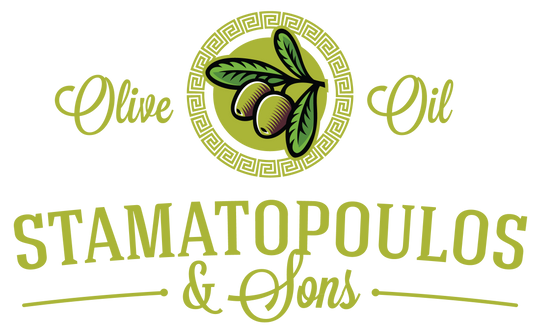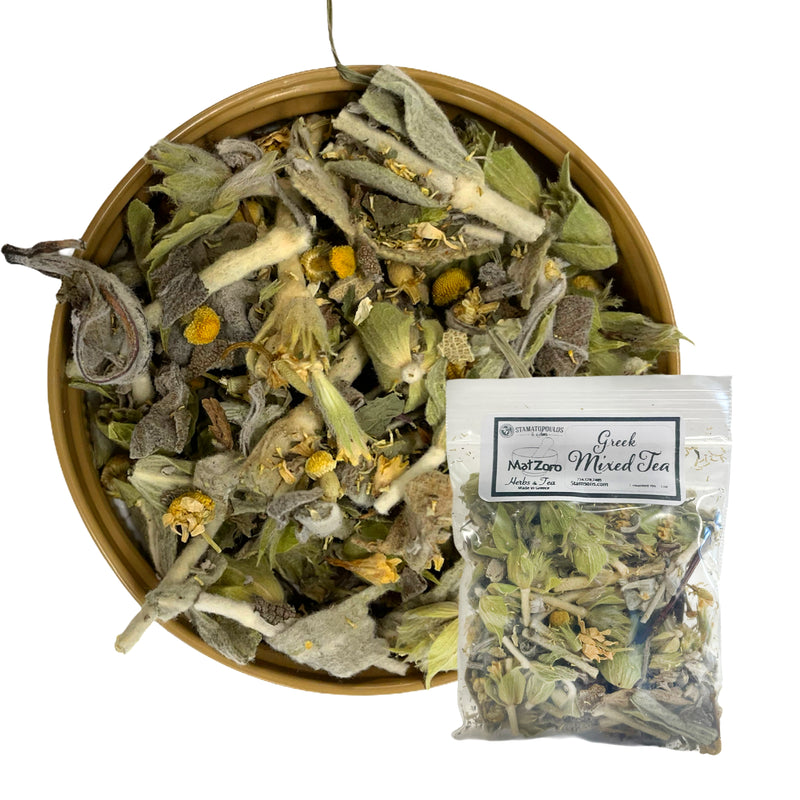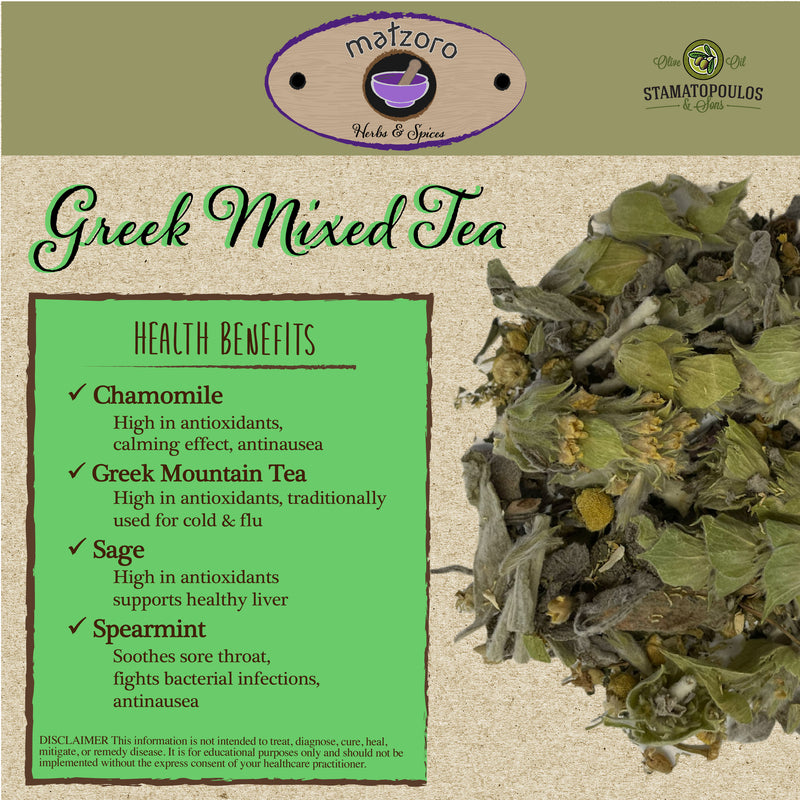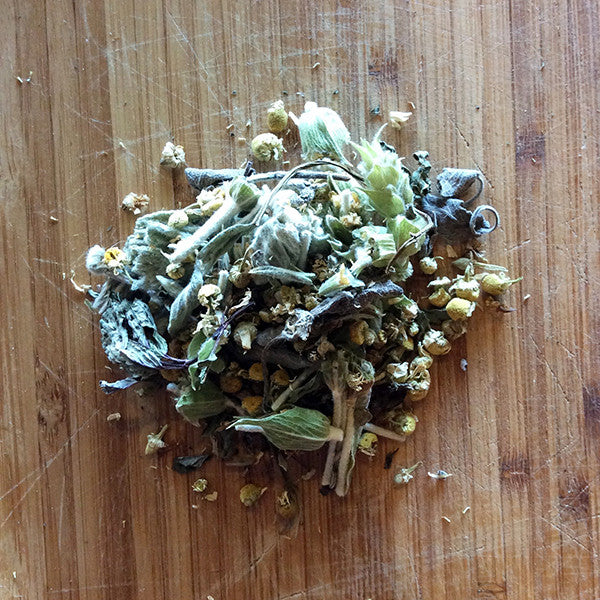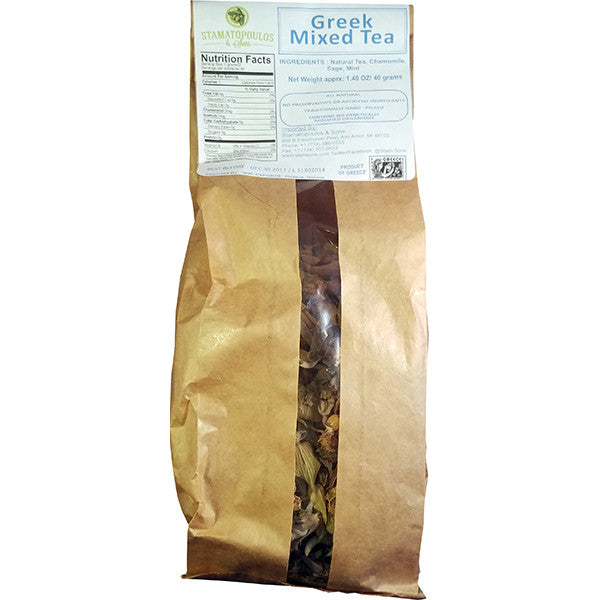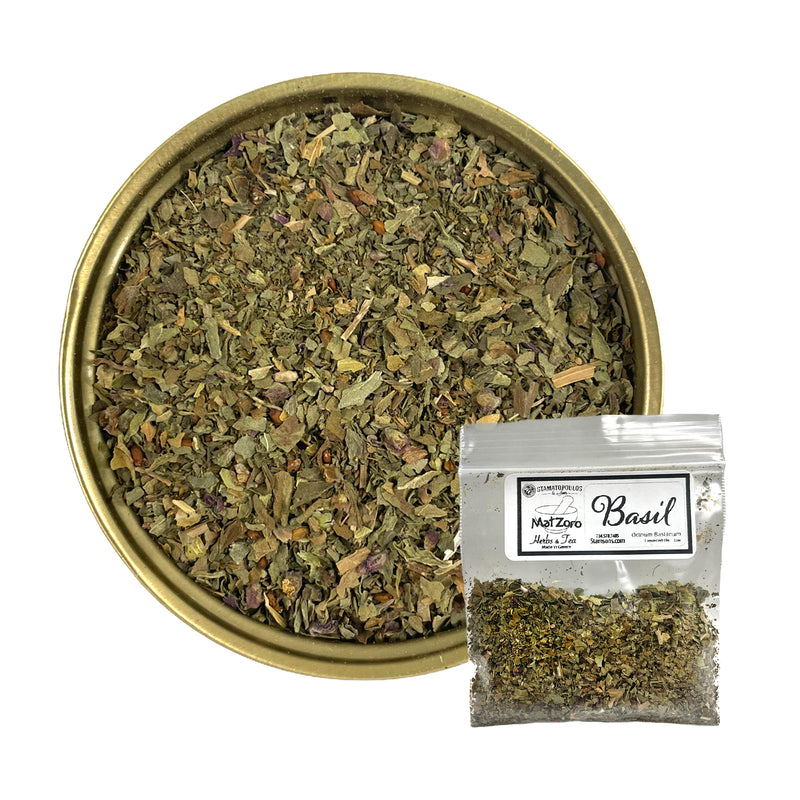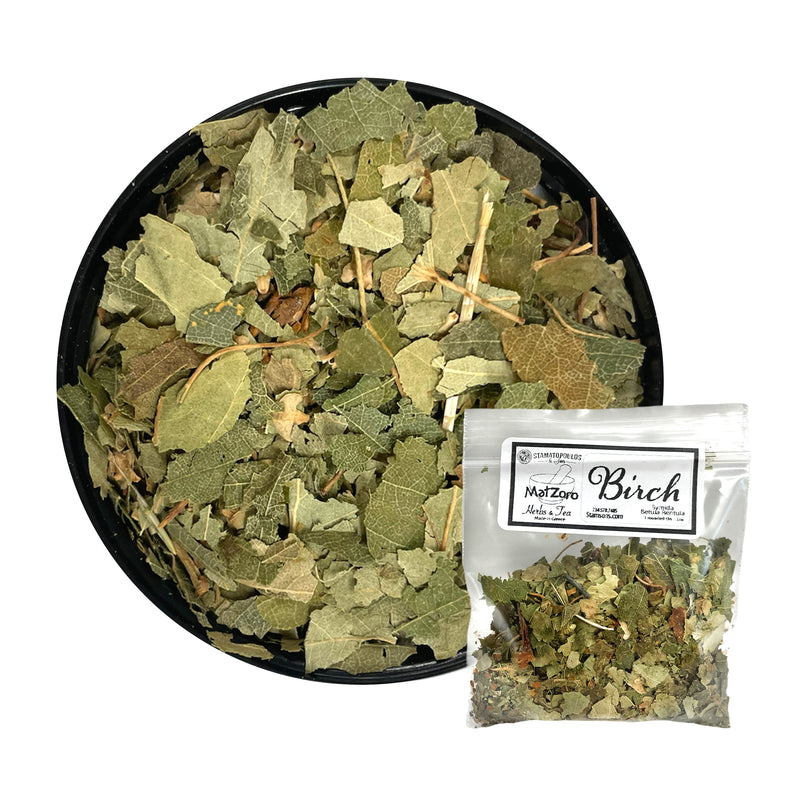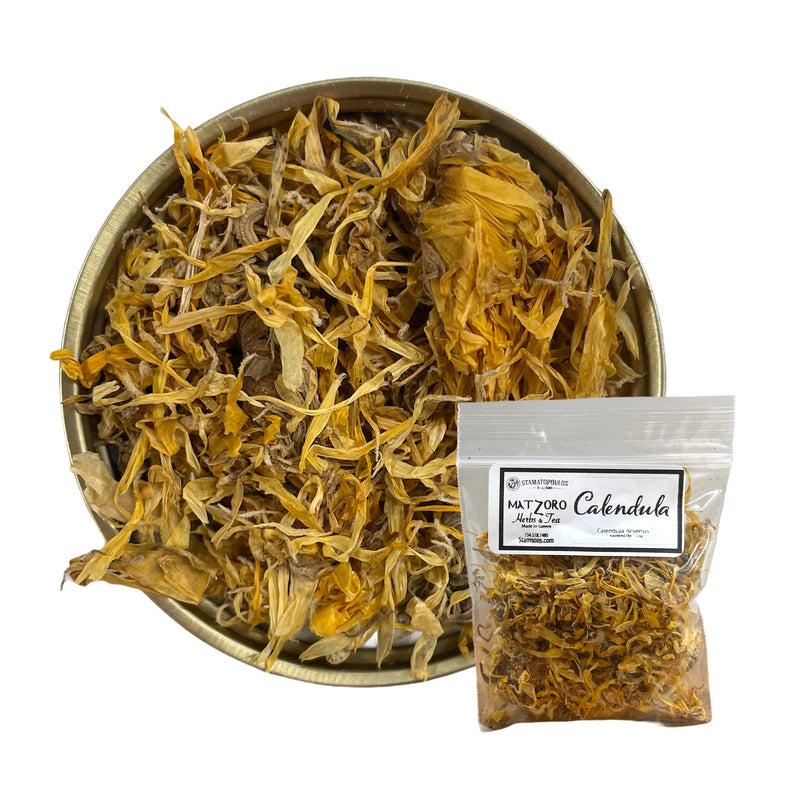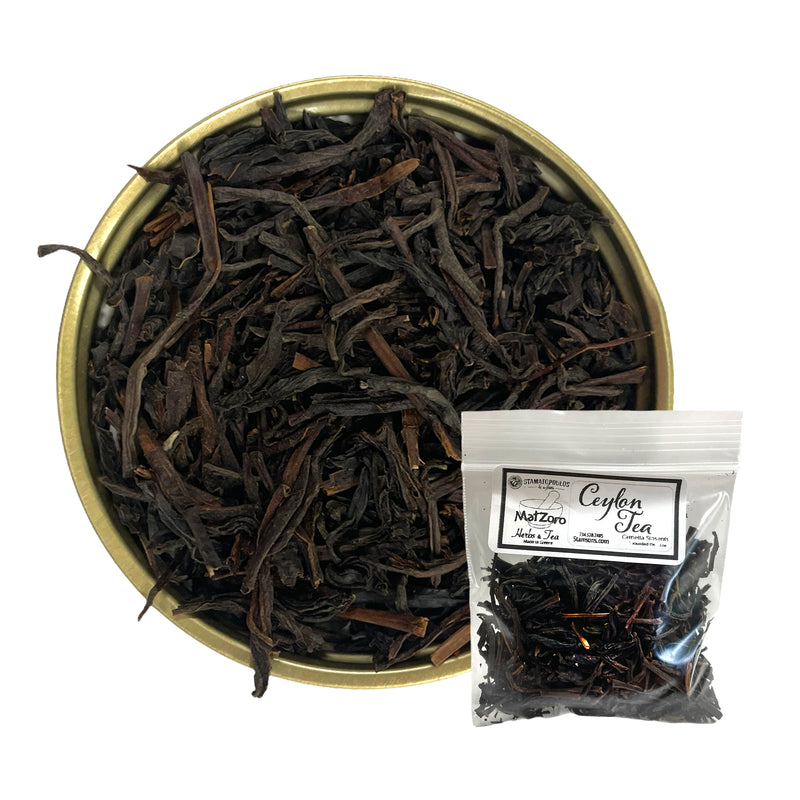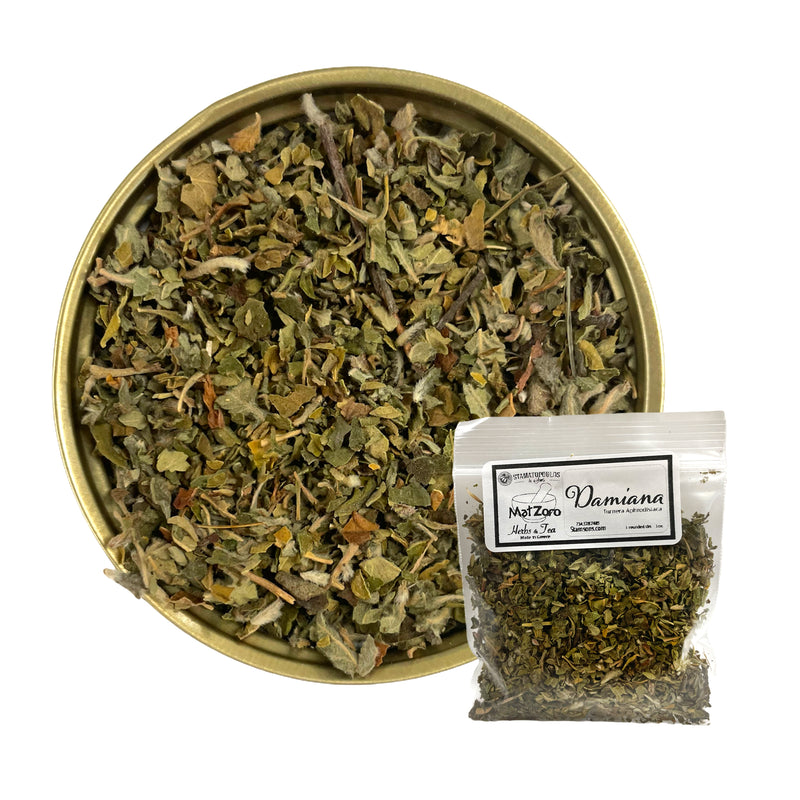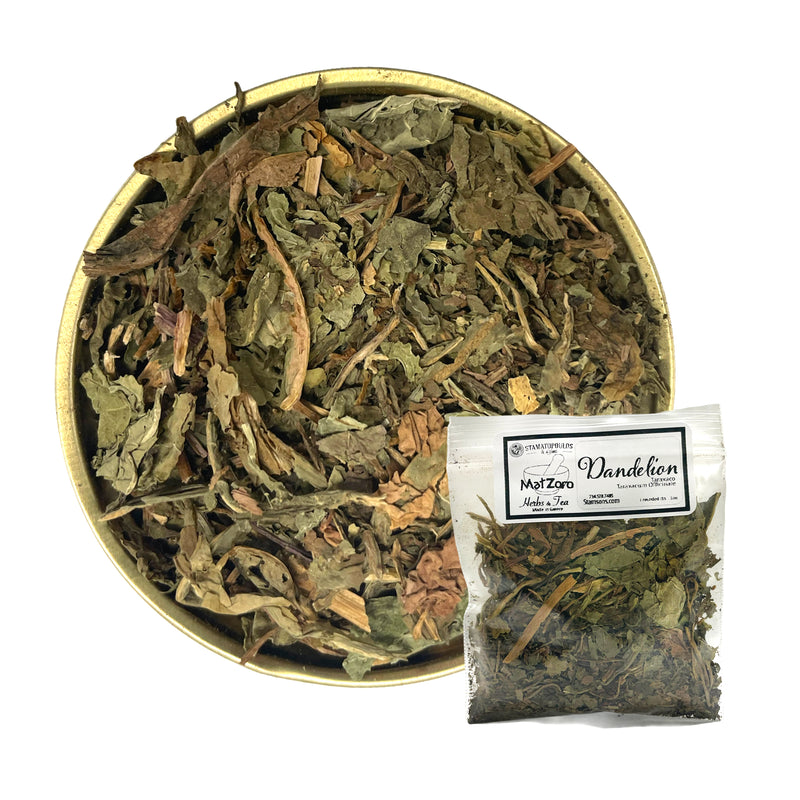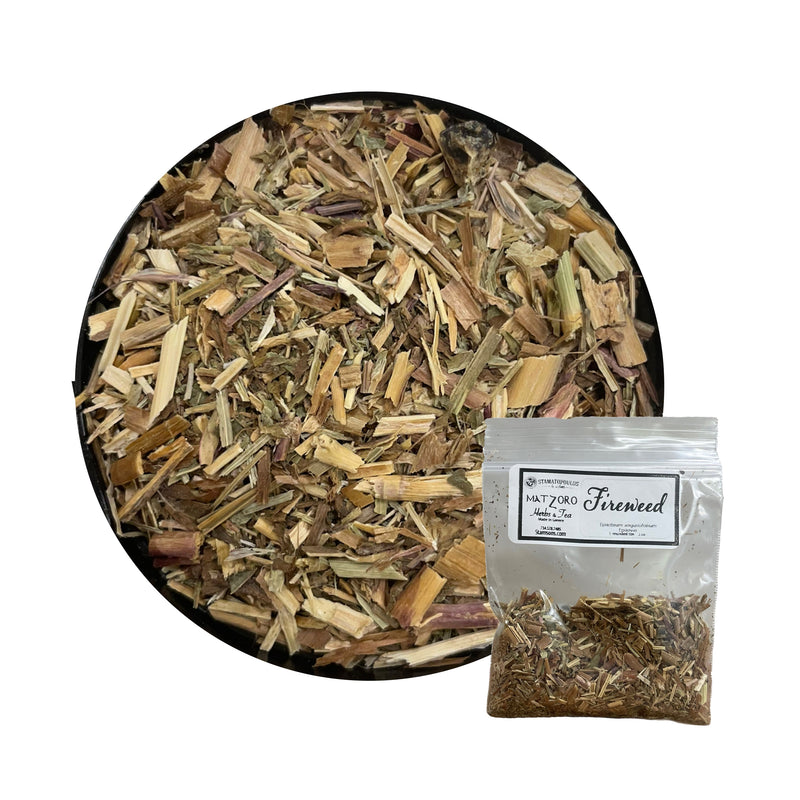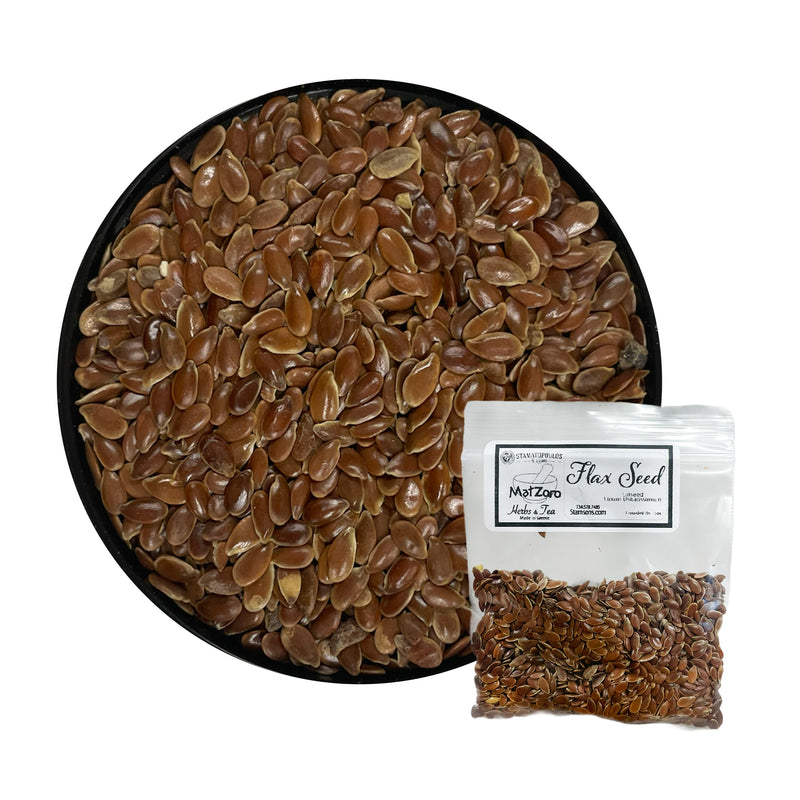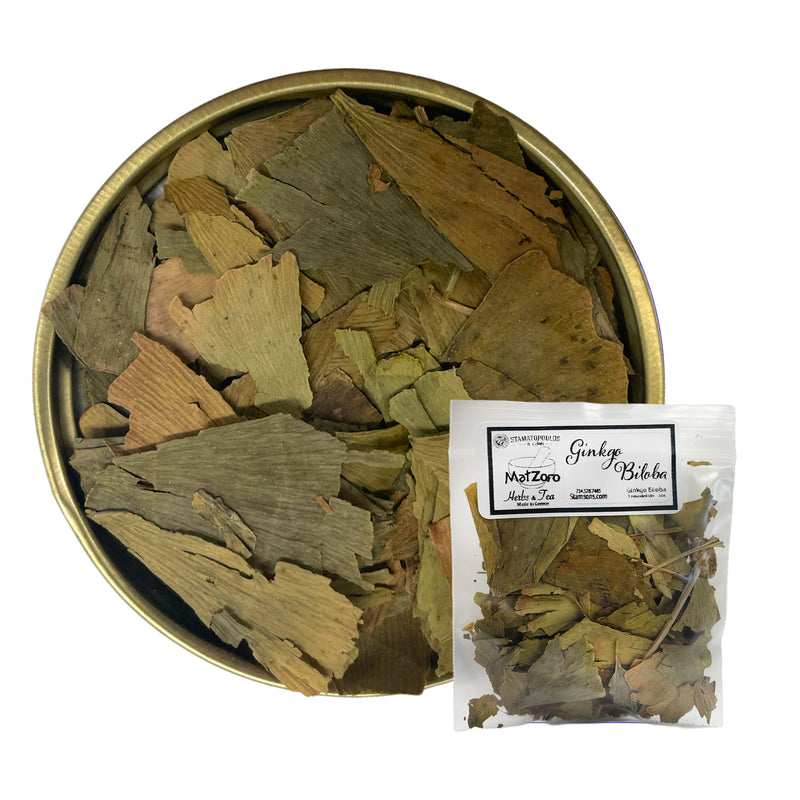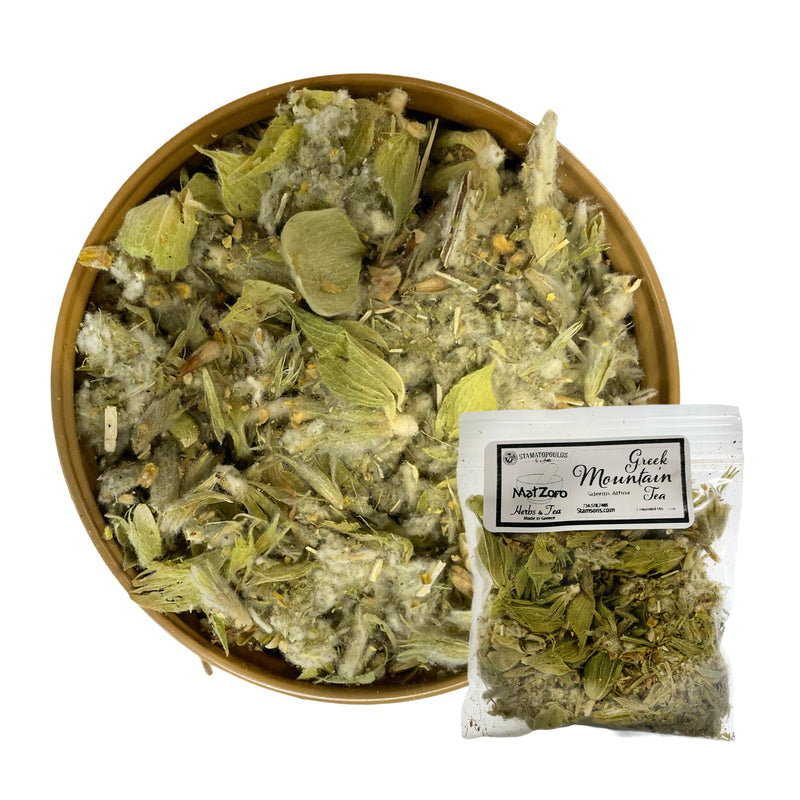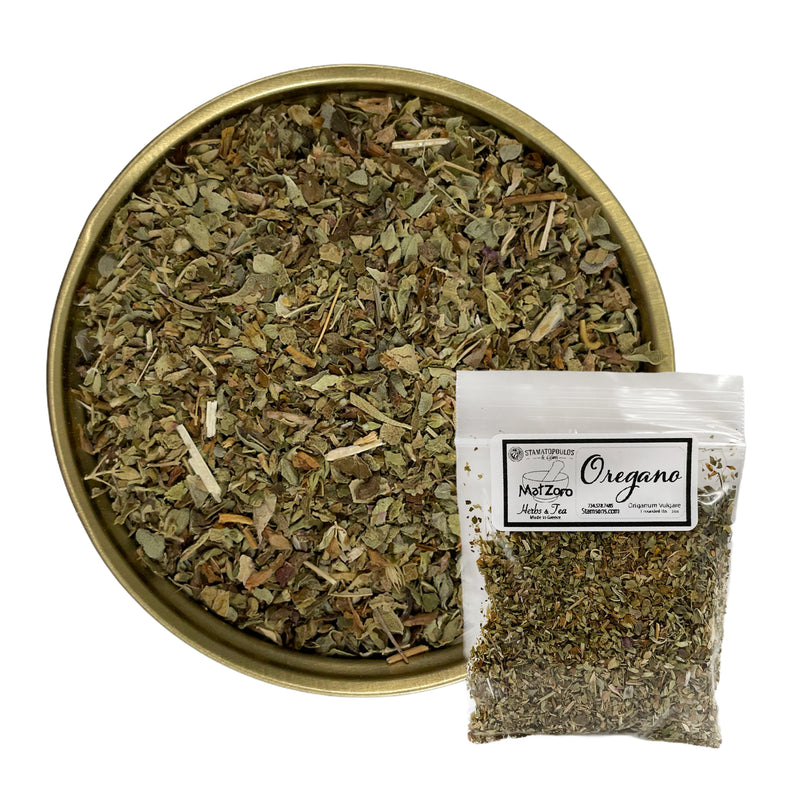{ "id":677916227, "title":"Greek Mixed Tea","handle":"greek-mixed-tea", "description":"\u003cp\u003eA classic Greek tradition, this deliciously smooth mixed tea contains chamomile, Greek Mountain Tea, sage, and spearmint.\u003c\/p\u003e\n\u003cp\u003e \u003c\/p\u003e\n\u003cp\u003e\u003cb\u003eCHAMOMILE\u003c\/b\u003e - \u003cb\u003eMatricaria chamomilla -\u003c\/b\u003e \u003cb\u003eAster Family\u003c\/b\u003e\u003cbr\u003e\u003cbr\u003e\u003cb\u003eHISTORY OF USE\u003c\/b\u003e \u003cbr\u003eChamomile has been used in medicinal herbal traditions since ancient Egypt, Greece, and Rome for its variety of actions, including use as an antispasmodic, carminative, mild sedative, anti-inflammatory, antibacterial. It is mild yet effective, and works particularly well for children. Chamomile has been a favorite beverage tea through the ages for its flavor of sunshine and honey.\u003cb\u003e\u003cbr\u003e\u003c\/b\u003e\u003cb\u003e\u003cbr\u003e\u003c\/b\u003e\u003cb\u003eMEDICINAL USE\u003c\/b\u003e \u003cbr\u003eAntispasmodic, carminative, mild sedative, mild anesthetic to mouth and stomach, stimulates lactation, anti-inflammatory, antibacterial, fungicidal \u003cbr\u003e\u003cb\u003eNervous System: \u003c\/b\u003eChamomile tea is found to be calming and soothing to restless children, nervous adults, and for babies with colic. Matthew Wood says chamomile is great for “babies of any age” as it “sweetens the soul.” Helps with anxiety, insomnia, nightmares. \u003cbr\u003e\u003cb\u003eDigestive system: \u003c\/b\u003eHelps relieve gas, calms “butterflies” in the stomach, good for most stomach complaints. Good for nausea, car sickness, motion sickness, stomach ulcers. \u003cbr\u003e\u003cb\u003eRespiratory system: \u003c\/b\u003e Chamomile can be used with coughs, colds, and intermittent fevers. \u003cbr\u003e\u003cb\u003eReproductive System: \u003c\/b\u003eHelps some women ease painful periods.\u003cbr\u003e\u003cb\u003eExternal\u003c\/b\u003e \u003cbr\u003eAs a hair rinse it is said to help bring out golden highlights.\u003cbr\u003e\u003cbr\u003e\u003cb\u003eFLAVOR \u0026amp; ENERGETICS\u003c\/b\u003e \u003cbr\u003eSweet, bitter, cooling, drying.\u003cbr\u003e\u003cbr\u003e\u003cb\u003eCONSTITUENTS\u003c\/b\u003e \u003cbr\u003eEssential oil, flavonoids, amino acids, choline.\u003cbr\u003e\u003cbr\u003e\u003cb\u003eTEA BLENDS\u003c\/b\u003e \u003cbr\u003eChamomile, lemon balm, linden flower for nervousness and anxiety, insomnia\u003c\/p\u003e\n\u003cp\u003e--\u003c\/p\u003e\n\u003cp\u003e \u003c\/p\u003e\n\u003cp\u003e\u003cspan\u003e\u003cb\u003eGREEK MOUNTAIN TEA\u003c\/b\u003e - \u003cb\u003eSideritis Athoa - Mint Family\u003c\/b\u003e\u003cbr\u003eCommon Name: Ironwort, Mountain tea, Shepherd’s Tea\u003cbr\u003e\u003cbr\u003e\u003cb\u003eHISTORY OF USE\u003c\/b\u003e\u003cbr\u003eMountain Tea is the beverage tea of choice for Greeks, Cretans, those in the Mediterranean and Balkan regions. It has been drunk for millennium in this region, one could say it is to Greeks what Green tea is to the Chinese. Sideritis genus grows throughout the Mediterranean region, with 17 species indigenous to Greece. The Euboea species grows wild on the Greek island Euboea. The name Ironwort is believed to derive from the herb’s external ability to heal wounds caused by iron weapons.\u003cb\u003e\u003cbr\u003e\u003c\/b\u003e\u003cb\u003eMEDICINAL USE\u003c\/b\u003e\u003cbr\u003eThis is the tea the Greek grandmas reached for when any child came down with cough, cold, chills, tummy aches, with its antimicrobial, antiseptic properties this herb is versatile and beneficial. \u003cbr\u003e\u003cb\u003eRespiratory system: \u003c\/b\u003egreat herbal remedy for soothing sore throats, and aiding in any respiratory sickness\u003cbr\u003e\u003cb\u003eDigestive system: \u003c\/b\u003e\u003cbr\u003emild diuretic and cleansing to the digestive tract and urinary system.\u003cbr\u003e\u003cb\u003eHigh Blood Pressure: \u003c\/b\u003eHelps blood vessels to relax.\u003cbr\u003e\u003cb\u003eExternal: \u003c\/b\u003eWith its high antioxidant content, Mountain Tea infused olive oil makes an excellent base for skin care products as it slows the aging process. Three Greek universities have current research to confirm this use. \u003cbr\u003e\u003cbr\u003e\u003cb\u003eHERBAL ACTIONS\u003c\/b\u003e\u003cbr\u003eantimicrobial, antiseptic, anti-arthritic, analgesic, anti-inflammatory, nervine, emollient, restorative\u003cbr\u003e\u003cbr\u003e\u003cb\u003eFLAVOR \u0026amp; ENERGETICS\u003c\/b\u003e\u003cbr\u003elight, wooly, warming, aromatic\u003cbr\u003e\u003cbr\u003e\u003cb\u003eCONSTITUENTS\u003c\/b\u003e\u003cbr\u003eFlavonoids, monoterpenoids, diterpenoids, iridoids, carvacrol, antioxidants\u003cbr\u003e\u003cbr\u003e\u003cb\u003eCAUTIONS\u003c\/b\u003e\u003cbr\u003eGenerally regarded as safe with no known side effects.\u003cbr\u003e\u003cbr\u003e\u003cb\u003eTEA BLENDS\u003c\/b\u003e\u003cbr\u003eDrink alone to enjoy the light, ethereal flavor of this tea, sweeten with Greek honey to enjoy the synergistic pairing. Lends itself to lemon, to lemon balm, lemon verbena, and chamomile.\u003cbr\u003e\u003c\/span\u003e\u003c\/p\u003e\n\u003cp\u003e \u003c\/p\u003e\n\u003cp\u003e\u003cspan\u003e--\u003c\/span\u003e\u003c\/p\u003e\n\u003cp\u003e\u003cb\u003eSAGE - \u003c\/b\u003e\u003cb\u003eSalvia Officinalis - Mint Family\u003c\/b\u003e\u003c\/p\u003e\n\u003cp\u003e\u003cspan\u003eCommon names: garden sage, common sage, true sage\u003cb\u003e \u003cbr\u003e\u003c\/b\u003e\u003cbr\u003e\u003cb\u003eHISTORY OF USE\u003c\/b\u003e\u003cbr\u003eSage is a pungent and distinctly flavored herb from the mint family with a long history of culinary and medicinal use. Throughout history, sage has been used to treat so many maladies that it gained a reputation as a panacea, prompting the late herb expert Varro E. Tyler, Ph.D., to write, “If one consults enough herbals… every sickness known to humanity will be listed as being cured by sage.”\u003cbr\u003eThe ancient Greeks and Romans first used sage as a meat preservative. They also believed that like another powerful preservative, rosemary, it could enhance memory. Sage gained a much broader medicinal reputation that rosemary did, however. The Roman naturalist Pliny prescribed it for snakebite, epilepsy, intestinal worms, chest ailments, and menstruation promotion.\u003cbr\u003eSixteenth-century British herbalist John Gerard called sage “singularly good for the head and brain. It quickeneth the senses and memory, strengtheneth the sinews, restoreth health to those that have palsy, and taketh away shaky trembling of the members.” In the 17th century, English herbalist Nicholas Culpeper seconded Gerard and recommended sage “boiled in water or wine to wash sore mouths and throats, cankers, or the secret parts of man or woman.”\u003cbr\u003eColonists introduced sage into North America, where it was widely used by folk healers to treat insomnia, epilepsy, measles, seasickness, and intestinal worms. America’s 19th-century eclectic physicians, forerunners of today’s naturopaths, used sage primarily to treat fever. They also prescribed sage poultices for arthritis.\u003cbr\u003eAs late as the 1920s, U.S. medical texts recommended sage tea as a gargle for sore throat and sage leaf poultices for sprains and swellings. Modern herbalists recommend sage as an external treatment for wounds and insect bites; as a gargle for bleeding gums, sore throat, laryngitis, and tonsillitis; and as an infusion to reduce perspiration, terminate milk production, and relieve dizziness, depression, menstrual irregularity, and intestinal upsets.\u003cbr\u003e\u003cbr\u003e\u003cb\u003eMEDICINAL USE \u003c\/b\u003e\u003cbr\u003eSeveral studies show that sage cuts perspiration by as much as 50 percent, with the maximum effect occurring two hours after ingestion. This effect helps explain how sage developed a reputation for treating fever, which causes profuse sweating, and for drying up mothers’ milk.\u003cbr\u003e\u003cstrong\u003eNervous system:\u003c\/strong\u003e sage is helpful to promote mental alertness. \u003cbr\u003e\u003cstrong\u003eDigestive system:\u003c\/strong\u003e Sage is useful with any mouth sores (such as after dental work); sore, dry throats with swollen glands. Can be used as a gargle. Also soothes indigestion. \u003cbr\u003e\u003cb\u003eMuscular system:\u003c\/b\u003e Relieves muscular tension.\u003cbr\u003e\u003cb\u003eReproductive system: \u003c\/b\u003eAssists in weaning as it dries up milk during lactation. In menopause sage helps balance hormones, relieve hot flashes, and night sweats.\u003cbr\u003e\u003cb\u003eExternal use: \u003c\/b\u003eIn laboratory studies, sage is active against several infection-causing bacteria. This finding lends some credence to the herb’s age-old use in treating wounds. Modern physicians would not recommend bandaging wounds with sage leaves as Dioscorides did, but you can use fresh leaves as garden first aid for minor wounds.\u003cbr\u003e\u003cbr\u003e\u003cb\u003eHERBAL ACTIONS\u003c\/b\u003e\u003cbr\u003eAntispasmodic, carminative, tonic, aromatic, astringent\u003cb\u003e\u003cbr\u003e\u003cbr\u003e\u003c\/b\u003e\u003cb\u003eFLAVOR \u0026amp; ENERGETICS\u003c\/b\u003e\u003cbr\u003ePungent, warm, aromatic, astringent\u003cbr\u003e\u003cbr\u003e\u003cb\u003eCONSTITUENTS\u003c\/b\u003e\u003cbr\u003eVolatile oils including thujone, tannins, bitters\u003cbr\u003e\u003cbr\u003e\u003cb\u003eCAUTIONS\u003c\/b\u003e\u003cbr\u003eAs a tea it is not recommended to continue use for more than three weeks. Not recommended during nursing unless the mother wants to wean, as it will dry up milk.\u003cbr\u003e\u003cbr\u003e\u003cb\u003eTEA BLENDS\u003c\/b\u003e\u003cbr\u003eFor sore, dry throats with swollen glands, sage and calendula. As a sore throat gargle, Rosemary Gladstar offers this highly effective recipe: 1 cup raw apple cider vinegar, 1 cup strong (triple strength) sage tea, 2-3 tsp sea salt, pinch of cayenne. For mental alertness: sage and gingko tea; sweeten with licorice.\u003cbr\u003e\u003cb\u003e\u003c\/b\u003e\u003c\/span\u003e\u003cspan\u003e--\u003c\/span\u003e\u003c\/p\u003e\n\u003cp\u003e \u003c\/p\u003e\n\u003cp\u003e\u003cspan\u003e\u003cb\u003eSPEARMINT\u003c\/b\u003e - \u003cb\u003e\u003ci\u003eMentha spicata (Diosmos) - \u003c\/i\u003e\u003c\/b\u003e\u003cb\u003e\u003ci\u003eMentha viridis (Menta\u003c\/i\u003e\u003c\/b\u003e\u003cb\u003e) - Mint Family \u003c\/b\u003e\u003cbr\u003eCommon names: spear mint, bush mint, horse mint\u003cbr\u003e\u003cbr\u003e\u003cb\u003eHISTORY OF USE\u003c\/b\u003e\u003cbr\u003eThese are forms of European Spearmint. They are native to the Mediterranean region and has a long history of use as a beverage tea. Spearmint is one of the most popular mints, as it is not as strong as peppermint.\u003cbr\u003eThe first recorded use of \u003ci\u003eMentha spicata\u003c\/i\u003e dates as far back as 400 BC. A native species to the Mediterranean region, spearmint was collected throughout the Roman empire and valued for its pleasant aroma. In ancient times, spearmint was used to clear unpleasant odors, freshen breath, and protect food stores from rodents, but there is little indication that it was used medicinally at this time.\u003cbr\u003eAs the Roman empire grew, the spearmint was brought to Britain where its medicinal properties became recognized. Its primary medicinal use was to treat indigestion, nausea and vomiting, as well as relieve the symptoms of respiratory illnesses such as bronchitis and the common cold. Administered in the form of tea made from dried spearmint leaves, its mild nature made it popular for use in young children. In the middle ages, spearmint was also used as treatment if you were bitten by a wild dog. The fresh herb was mixed with salt and applied directly to the wound to promote healing. \u003cbr\u003eSpearmint grows wild throughout North America thanks to British soldiers who transported it during the colonial era. Wrigley Inc. introduced a breath-freshening gum in 1893 which transformed spearmint into its most common use even today. However, despite spearmint’s breath-freshening properties, the medicinal benefits have not been overlooked.\u003cbr\u003e\u003cbr\u003e\u003cb\u003eMEDICINAL USE\u003c\/b\u003e\u003cbr\u003e\u003cb\u003eReproductive system:\u003c\/b\u003e extremely helpful when used to alleviate nausea during pregnancy and not as harsh as peppermint.\u003cbr\u003e\u003cb\u003eRespiratory system:\u003c\/b\u003e Soothing to sore throats.\u003cbr\u003e\u003cb\u003eDigestive system:\u003c\/b\u003e Soothes queasy stomachs and nausea.\u003cbr\u003e\u003cbr\u003e\u003cb\u003eHERBAL ACTIONS\u003c\/b\u003e\u003cb\u003e\u003cbr\u003e\u003c\/b\u003eDiuretic, aromatic, digestive stimulant, antimicrobial, nervine, febrifuge.\u003cbr\u003e\u003cbr\u003e\u003cb\u003eCONSTITUENTS\u003c\/b\u003e\u003cb\u003e\u003cbr\u003e\u003c\/b\u003eEssential oil, including carvone.\u003cbr\u003e\u003cbr\u003e\u003cb\u003eFLAVOR \u0026amp; ENERGETICS\u003c\/b\u003e\u003cbr\u003eAromatic, cooling.\u003cbr\u003e\u003cbr\u003e\u003cb\u003eTEA BLENDS\u003c\/b\u003e\u003cbr\u003eMakes an uplifting tea blend with lemon balm and St. John’s Wort. Soothing to sore throats.\u003cbr\u003e\u003cbr\u003e\u003cb\u003eCAUTIONS\u003c\/b\u003e\u003cbr\u003ePeople taking pharmaceutical blood thinners should not ingest spearmint. \u003cbr\u003e\u003cbr\u003e\u003cb\u003eDISCLAIMER\u003c\/b\u003e\u003cbr\u003eThis information is not intended to treat, diagnose, cure, heal, mitigate, or remedy disease. It is for educational purposes only and should not be implemented without the express consent of your healthcare practitioner.\u003cbr\u003e\u003c\/span\u003e\u003c\/p\u003e", "published_at":"2015-05-28T13:11:00", "created_at":"2015-05-28T13:15:06", "vendor":"Stamatopoulos \u0026 Sons", "type":"Herbs, Teas, \u0026 Spices", "tags":["Herbs \u0026 Spices \u0026 Teas"], "price":600, "price_min":600, "price_max":600, "price_varies":false, "compare_at_price":null, "compare_at_price_min":0, "compare_at_price_max":0, "compare_at_price_varies":false, "all_variant_ids":[1898512643], "variants":[{"id":1898512643,"title":"Default Title","option1":"Default Title","option2":null,"option3":null,"sku":"","requires_shipping":true,"taxable":false,"featured_image":null,"available":true,"name":"Greek Mixed Tea","public_title":null,"options":["Default Title"],"price":600,"weight":40,"compare_at_price":null,"inventory_quantity":25,"inventory_management":"shopify","inventory_policy":"deny","barcode":"0728943764147","requires_selling_plan":false,"selling_plan_allocations":[]}], "available":null,"images":["\/\/stamsons.com\/cdn\/shop\/products\/greenmixedtea2a.jpg?v=1611347229","\/\/stamsons.com\/cdn\/shop\/products\/3ainfographicsamazon_greekmixedtea.jpg?v=1611347229","\/\/stamsons.com\/cdn\/shop\/products\/600_x_600_Greek_Mixed_Tea1.jpg?v=1611347229","\/\/stamsons.com\/cdn\/shop\/products\/600_x_600_Greek_mixed_tea.jpg?v=1611347229"],"featured_image":"\/\/stamsons.com\/cdn\/shop\/products\/greenmixedtea2a.jpg?v=1611347229", "options":["Title"], "url":"\/products\/greek-mixed-tea"}
Greek Mixed Tea
Related Products
Basil
From $ 0.99
Birch (Betula Rendula)
From $ 1.00
Calendula
$ 5.00
Ceylon Tea
From $ 1.00
Dandelion
$ 7.00
Echinacea
From $ 1.00
Fireweed
From $ 1.00
Flax Seed
From $ 1.00
Greek Mountain Tea
$ 4.00
Greek Oregano
$ 7.00
